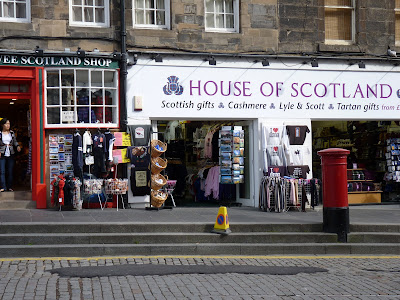 In the 1970s, the BBC ran an annual series of televised ghost stories, either on Christmas Eve or Christmas night. The shows, which ran from 30-50 minutes, were huge hits, and inspired a revival series in 2005. While the idea of ghost stories during Christmas rather than Halloween may seem odd to Americans, but telling Yuletide ghost stories is in fact an old British tradition. That's the reason, for instance, that Charles Dickens had three ghosts visit Ebenezer Scrooge in A Christmas Carol, which is essentially
In the 1970s, the BBC ran an annual series of televised ghost stories, either on Christmas Eve or Christmas night. The shows, which ran from 30-50 minutes, were huge hits, and inspired a revival series in 2005. While the idea of ghost stories during Christmas rather than Halloween may seem odd to Americans, but telling Yuletide ghost stories is in fact an old British tradition. That's the reason, for instance, that Charles Dickens had three ghosts visit Ebenezer Scrooge in A Christmas Carol, which is essentiallya ghost story.
A Ghost Story for Christmas (BBC), 1971-1978
 |
| M.R. James |
1. Stalls of Barchester (aired: 24 December 1971 at 11pm)
Based on the 1911 MR James story from More Ghost Stories called "The Stalls of Barchester Cathedral" about the discovery of a 50-year old diary that reveals a possible murder and curse.
2. A Warning to the Curious (aired 24 December 1972 at 11pm)
Adapted from MR James' 1925 story about an archaeologist who while on vacation discovers an Anglia king's crown, and is then stalked by crown owner's ghost.
3. Lost Hearts (aired 25 December 1973 at 11:35pm)
From MR James' 1905 story collection, Ghost Stories of an Antiquary, this tale is about an orphan who stays with an old man obsessed with immortality.
4. Treasure of Abbot Thomas (aired 23 December 1974 at 11:35pm)
Based on another of MR James 1905 stories.
5. Ash Tree (aired on 23 December 1975 at 11:35pm)
About a new owner of an estate who slowly learns that the previous owner condemned and hung a woman as a witch. And she may haunting the place. Yet another of MR James' 1905 stories.
6. The Signalman (aired on 22 December 1976)
The first non-MR James adaptation. This one was instead on a popular Charles Dickens' story from 1865 and is probably the best received and well-known of the series. A rr signal man who sees a nightly ghostly image.
7. Stigma (aired on 29 December 1977)
This was the first in the series to be set in the modern era, and the first original story (by Clive Exton). This involves a rural nuclear family who suffer a curse once a stone from an ancient stone circle is moved from their yard.
8. Ice House (aired 25 December 1978)
Another original teleplay (by John Bowen), this was the weakest of the original run and led to its cancellation.The story concerns a strange flower in an old ice house that may exert a strange control on its surroundings.
Revival series of A Ghost Story for Christmas (2005-present)
While it is not shown every year, the BBC has nonetheless revived its holiday ghost story tradition in 2005. Unlike the earlier series, all of these were MR James adaptations. The most recent one was last year's Tractate Middoth, adapted from MR James story by Mark Gattis, a regular writer for both Doctor Who and Sherlock (on which he stars as Mycroft Holmes).
1. View from a Hill (aired 23 December 2005)
2. Number 13 (aired 22 December 2006)
3. Whistle and I'll Come to You (aired 24 December 2010)
Remake of the original 1968 adaptation, starring John Hurt.
4. Tractate Middoth (aired 25 December 2013)
Other Televised Christmas Ghost Stories
While the 1971-1978 run of Ghost Stories for Christmas were the most famous, the BBC and ITV ran many other holiday ghost shows, many of which people erroneously believe to be part of the original series. The first two listed below are what inspired the original series.
Whistle and I'll Come to You (aired 1968)
Directed by famed play/film director Jonathan Miller, this is the one that kicked off the trend. Filmed a spart of the anthology series, Omnibus. A professor who finds a whistle by the shore is then troubled by terrible visions.
The Stone Tape (aired 25 December 1970)
Written by Nigel Kneale (whose earlier character Quatermass is a inspiration for Doctor Who) this concerns scientists discovering "memories" (ghosts?) recorded in stone walls. For real-life ghost hunters, this is now known as the Stone Tape Theory. Unfortunately, the entire episode is not currently available on Youtube. Below is a clip and a link to the entire episode: http://www.veoh.com/watch/v19922854eqX3X8Ar
Although not shown on Christmas, it was an MR James adaptation made by the same team as the original series, so is usually included with the others. The story is about a demonoloist who curses aTV crew after they air a damaging story about him. Below is a trailer for the show.





















































